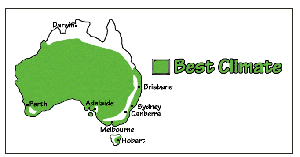Wattles, also called acacias, are wonderful native plants. More than 850 species of wattle grow in Australia, ranging from ground covers and charming shrubs to giant trees that provide fine timber and screening. With this number of species and many cultivars there is a wattle for just about any garden in Australia.
Most wattles are quick growing, short-lived plants that will usually last for about seven to 12 years. Some species however are longer lived. If planted in a thicket, they will self-sow, which will mean that short-lived plants are quickly replaced. Wattles are tolerant of a broad range of conditions. Wattles are successful colonisers, if you have bare ground or rotten soil they will grow and turn it into good soil. Some wattles can become a pest out of their own natural environment. So if you live near bushland, select local wattles to plant in your garden. Wattles also provide food for many Australian native birds, animals and insects so are a great plant to have in the garden.
Winter flowering
While there are wattle species which flower throughout the year, the winter-flowering species are particularly attractive in the landscape, where their bright yellow or cream flowers bring colour to the garden at a time when many of the more traditionally grown plants are bare or not flowering. One of Australia’s most popular wattles is Acacia pycnantha, which is the official Australian floral emblem.
Wattle varieties in Australia
Below are a selection of wattles which are suited to a wide climatic range (see climate map below).
Acacia longifolia, Sydney Golden Wattle: A tree to about 5m (16′) which flowers from July-October and is widely available throughout Australia. The flowers are scented and attract insects and birds.
Acacia baileyana, Cootamundra Wattle: A tree to 6m (18′) with ball flowers June-September, grey green fern-like leaves. Other forms:
A prostrate or ground cover form which can take two or three years before it starts to flower.
Variety, ‘Purpurea’, with purple new foliage.
A new variety ‘Gold form’ with golden tipped new foliage is now available
Climate map – Acacias
Smaller varieties
Acacia guinetii: A relatively new ornamental species from Geraldton in WA which tolerates a light frost. It grows to about 1.5m (5′) with dense foliage and pretty flowers from June-October. It would fit into most gardens. Needs a well drained soil in positions from partial shade to full sun.
Climate map – Acacia guinetii
Acacia fimbriata ‘Dwarf form’, Fringed Wattle: The normal form of this variety grows to about 4m (12′) but the dwarf form grows to about 1.5m (5′) with dense foliage. Flowers in July-October with lemon coloured, scented flowers.
Acacia suaveolens ‘Dwarf form’, Sweet Wattle: A prostrate form that grows to about 1.5m (5′) with silvery green foliage which can be quite grey in the garden.
Acacia cardiophylla, Wyalong Wattle: A shrub or small tree to 5m (16′) with grey foliage which comes in a prostrate form (Acacia cardiophylla ‘Gold Lace’) which grows to about 1.5m (5′). It has silvery green fern like leaves and flowers July-January.
Sowing seed
Most wattle seeds can be sown in spring or early autumn into clean plastic pots, seed trays or any plastic container with holes for drainage punched through the bottom. A good potting mix is 1 part washed coarse river sand: 1 part peat moss, or any mix that will re-wet easily, drains well and is coarse enough for good aeration and drainage. To plant seeds simply scatter them over the mix and lightly cover with mix.
Once wattle seeds have grown their first true leaves they can be transferred into a tall pot. A cardboard milk container is a good shape for growing wattle seedlings.
Maintenance
Fertilising wattles is not generally considered necessary. Mulching should be undertaken to conserve moisture, keep the roots cool, restrict weed growth, reduce soil compaction and improve soil texture. Water only when plants are young or when older plants are showing signs of distress in a very dry period. Regularly tip prune young plants to encourage more compact bushes and prune regularly after flowering, unless seeds are required.
Buying wattles
Check with your local nursery or local forestry commission nursery to see which species of wattle are best in your area. For the prostrate forms check with a specialist native plant nursery.
Take care when selecting plants from a nursery. Wattles have vigorous root systems so avoid large plants in small pots or plants with roots growing through the bottom of pots as they may be root bound and will not grow as well as a younger, smaller plant when put into the ground.



